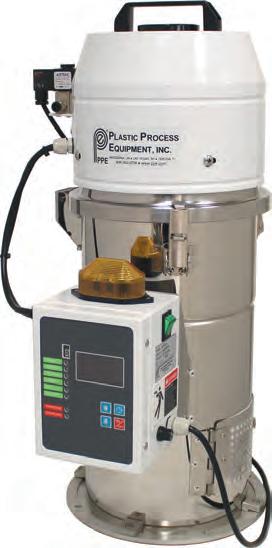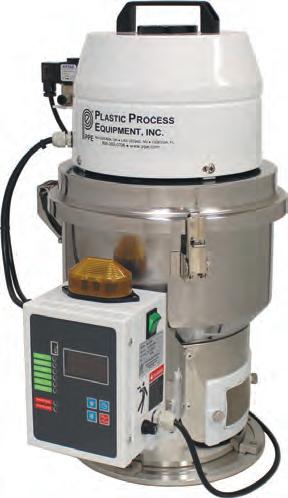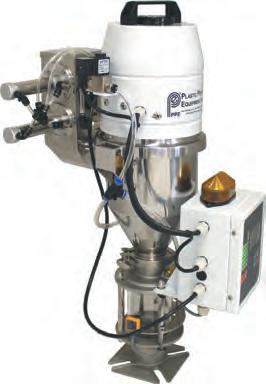
4 minute read
Technical Tips
The importance of mold cooling
By Philip M. Burger, Burger & Brown
Molding is a complex business and from a technical perspective there’s a lot to know, from materials science and the workings of a molding press to hydraulics and electrical controls.
But I’d argue that understanding mold cooling is one of the most important things. A slight difference in cooling conditions can add or subtract seconds from the molding cycle, which ultimately can mean the difference between success and failure for a mold shop. Critical dimensions, surface finish, and part warpage are all affected by cooling conditions.
Which is why it’s so ironic that mold cooling is so often neglected in molding shops. We have all sorts of “geewhiz” technology for monitoring and controlling nearly everything but mold cooling.
Like most things, there’s more to know about the finer points of mold cooling and heat transfer than most of us care to learn. But this column will focus on some of the simple, common sense things to know on this subject that can help you gain a better understanding of mold cooling and be helpful in your molding efforts.
Let’s start with some engineering basics. Most of you have heard something about turbulent flow and that it’s good for cooling. But what is it, exactly, and how does it help? Turbulent flow begins when the velocity of fluid in a channel increases to a critical level. Above this critical velocity, vigorous internal mixing of the fluid occurs as it flows. This improves heat transfer by mixing warmer fluid near the wall of the cooling passage with the relatively cooler interior fluid. The precise velocity for turbulent flow depends on several variables, including the cooling passage geometry, fluid viscosity, and roughness of the pipe walls. The formula for a ratio known as Reynolds number includes these variables, and a Reynolds number greater than 4,000 denotes turbulent flow.
Table 1 at bottom shows some values for normal mold cooling situations with water as the fluid.
Having said this, I can tell you that in some cases turbulent flow doesn’t matter too much, and in other cases it matters a lot. In one example, the cycle time for a coffee mug with a wall thickness of 0.200 inches was very poor. The molder wanted to improve the cooling in the mold cores with the goal of achieving a substantial cycle improvement, and spent a significant sum making cooling “improvements.” When the mold was sampled, the molder was surprised to learn that the cycle was about the same as before. What was going on?
The best cooling system in the world won’t take away heat any faster than the molded part will give it up. Most unfilled resins transfer heat at a rate 1/10 to 1/25 that of steel. The outer walls of a thick part insulate the mold from the heat trapped in the centre of the part.
The message here is that for very thick parts, the cooling system will have relatively little effect on cycle time, whereas thin parts give up their internal heat quickly because of the thin walls and typically run on a fast cycle. These factors combine to greatly increase the demands on the cooling system, so good cooling performance requires well-placed passages in the mold as well as greater flow rates to carry away the heat. Thus, it’s generally true that if the molded parts will give up their heat, it’s worthwhile to use higher cooling flow rates. And it’s also true that the faster the flow rate, the more total heat you remove, even though the change in the temperature of the water flowing through the mold is very slight. Intuition may suggest that the water would pick up more heat at a slower flow rate, but it won’t. Although the temperature of the water increases more at a slower flow rate, total heat removed does not. CPL
Philip M. Burger, P.E., founded Burger & Brown Engineering Inc. in 1978 and served as president until 2005. Based in Grandview, Mo., Burger & Brown manufactures engineered products related to mold cooling and in-mold sensing. Burger currently works parttime for the firm and has most recently developed an educational program called Scientific Cooling that was launched in October 2013. Visit www. smartflow-usa.com.
Table 1. Approximate flow rate needed to produce turbulent flow* in drilled passages
Pipe size ID of drilled passage Min. flow rate for turbulent flow (gal/min)
1/16 NPT 0.250 1/4- drill
1/8 NPT 1/4 NPT 0.339 R drill 0.438 7/16- drill
3/8 NPT
0.593 19/32- drill 1/2 NPT 0.719 23/32- drill *Based on Reynolds number of 4,000 0.33 0.44 0.55 0.74 0.90








